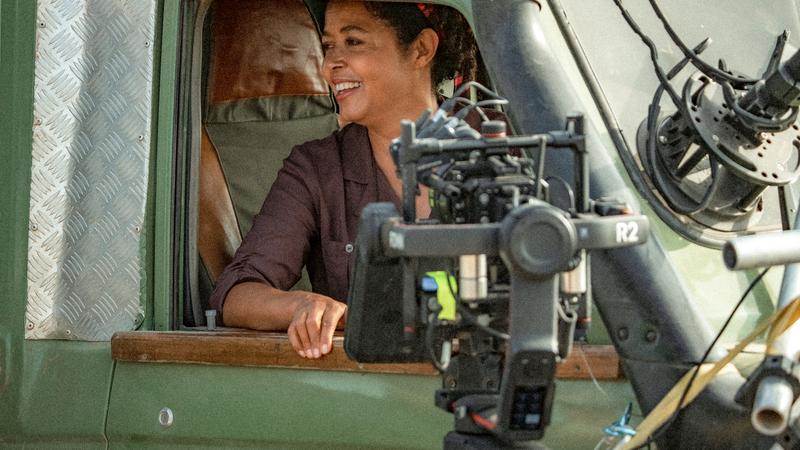The Making of National Geographic’s “Secrets of the Elephants”
“These crews had the most incredible equipment that I've never even seen before," gushed Dr. Paula Kahumbu during a TCA press conference for the new National Geographic series from executive producer James Cameron, Secrets of the Elephants. A follow-up to Secrets of the Whales, conservationist Paula Kahumbu played a key role in shaping the four-part series and appears on camera. She’s no stranger to elephants, but working with a film crew of this scale was a special experience. “They were working off boats a lot of the time because in the rainforest, you can move down the rivers. And you can film from boats into the edge of the forest, but you can also put these really incredible camera traps and night-vision cameras, which can help us to see the elephants in the forest without the elephants knowing that we're there. We were very, very careful to make sure that we didn't disturb the elephants."

(National Geographic for Disney/Wim Vorster)
Cinematographer Bob Poole has been filming elephants since he was 17. “It’s incredible how relaxed those elephants were," Bob said of the desert elephants he helped photograph. Most elephants are reclusive of humans, but the desert elephant was quite different from their African cousins. “They had nowhere to run to because it's just open country. You can't even imagine how elephants could possibly survive there. But they're even eating trees along these dry riverbeds. They understand people there are not to hurt them, and so they're fine with that." The job of a wildlife cinematographer is often to blend into the scenery to not have an effect on animal behavior, but that was impossible in the desert. “It was difficult because we're working with a 50- to 1,000-millimeter lens, and an elephant comes too close, you're stuck with a close-up. You want a wide shot. And you don't want to move because you don't want to disrupt the scene. We're after just filming elephants absolutely doing natural behavior, and the best way to do that is to almost not be there. In other words, you don't want to be moving in the middle of interesting behavior." The series also required some new equipment. To achieve some of its shots. “We built a crane that could go off-road and get high and low shots. I don't think anybody had ever used it before, so we built it for this project."
“This was shot over two years," revealed Janet Han Vissering, Sr. Vice President of Program Development and Production at Nat Geo Wild. “This one, we had to pull some very, very amazing expertise, experts and scientists like Paula and Joyce [Poole, Bob’s sister]. It was an all-hands-on-deck process. At National Geographic, it's really important that we're constantly pushing and opening and really absorbing the incredible access that we're hoping to give, deepening that connection with the natural world, opening the aperture of the knowledge base that most people have through really emotional and awe-inspiring footage. So having the connection here like Joyce, who is our elephant whisperer, Bob, Maria, that's what we used to bring this home."
“We think of nature as ‘out there,’ as those stories not being about us," executive producer Maria Wilhelm about why Secrets of the Whales was such a hit that it has spawned a franchise that continues with Secrets of the Elephants. “We've really tried in the Secret series to forge that intimate emotional connection with nature. I reflect on that famous quote, modifications of which we've all heard so many times, that you don't protect and preserve what you don't love, and you don't love what you don't know. So that's what we are trying to do, prompt understanding, prompt that intimate connection so we protect and preserve, so we love."
Fall in love with the gentle giant stars of Secrets of the Elephants tonight at 9/8c on National Geographic and streaming this Earth Day on Disney+.


